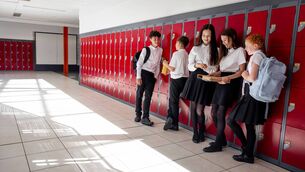Enjoying the slow pace of a spring boat trip
Three days travelling through the midlands at between 8 and 10kph gives you a wonderful chance to observe what’s happening in the countryside.
It was a pleasant trip. The weather during the day was mostly quite good for the time of year. There was even the occasional opportunity for the crew and ship’s dog to sun themselves on deck. But the nights were bitterly cold with air temperatures down to -2 and glittering white frost.
Many of the changes that happen in the water and on land during the spring depend on the mean temperature, the average between day and night, and this is still low. Winter is clinging on this year and we spent the evenings shovelling turf and sticks into the stove.
But there were some signs of spring. For many plant species (though not for grasses and reeds) the length of the day is more important than temperature. The reed beds were still a yellowy brown but there were primroses and celandines in bloom.
Along the boggy stretches of the canal there was a great show of colour. Golden furze blossom contrasted with the white trunks of the still wintry birch trees and there was a sprinkle of purple from the stems of bog myrtle.
There was quite a lot of goat willow growing along the banks. This is pussy willow and it was in full bloom. The oval catkins of the male trees are gold and of the females silver.
Every so often the boat would potter up to a heron standing on the bank. Herons are not particularly afraid of boats and, sitting in my helmsman’s seat, I would get a view of them through the wheelhouse window from as close as five or 10 metres.
It’s only when you see one this close that you realise how enormous these birds are and how truly strange they look. Then they open those great two metre span wings and, legs dangling, heave themselves into the air looking like extras from Jurassic Park. Sometimes this impression is reinforced by a primeval croak.
What they normally do then is fly a few hundred metres ahead and settle on the bank again. They can do this many times before they realise that a better option is to fly behind the boat not in front of it.
Then, just before Toberdaly Bridge, a flash of neon light and a bird flying so fast its wings were a blur, the first kingfisher I’ve seen this year. I saw the second a few hours later.
The bows of the boat slipping through the calm water also disturbed fish. Pike lying in ambush among the dead reed stems were quite distinctive with their long slim silhouette. There were bream the size of dinner plates and perch raising their spiny fins in alarm. The boat also disturbed quite a few anglers, many of them taking part in Easter coarse fishing matches.
The days passed in mesmerising tranquillity. Spring advancing at the same slow pace as the boat. But eventually we arrived, which was a little sad. I’ll do it again soon.
* dick.warner@examiner.ie













